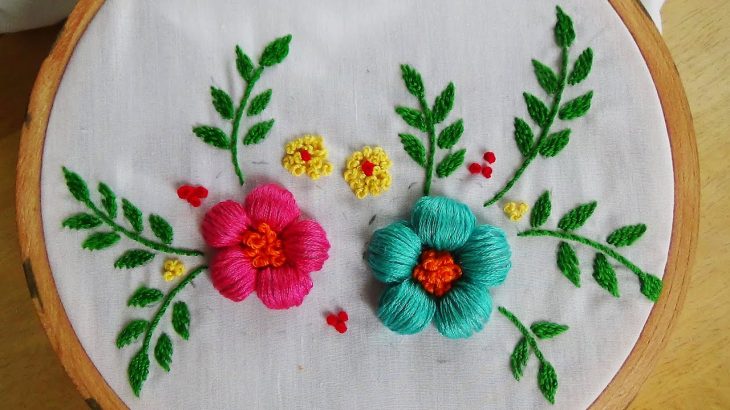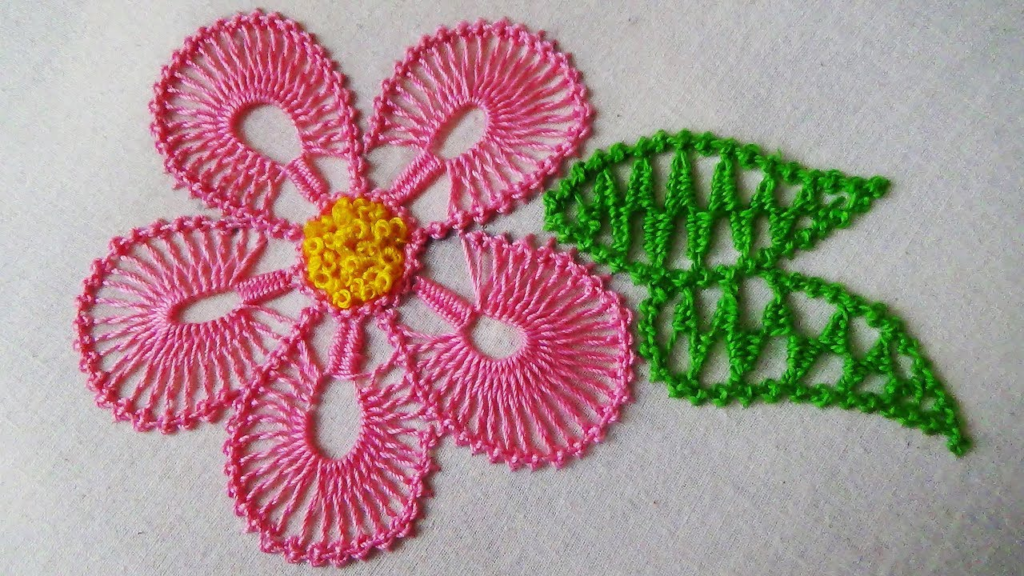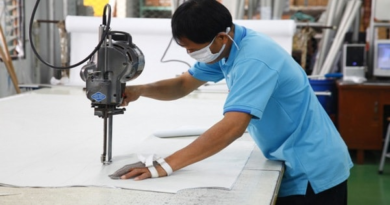Free Hand Embroiderer Course(1year Diploma)
Hand Embroiderer Course click here
The Hand embroiderer (Add awala)works in group to create design as per tracings (khaka) provided on to the fabric. They use hand embroidery along with stones and other similar elements to embellish the design.
Brief Job Description:-Hand embroiderer (Addawala) is responsible for creating design along with the tracings done on to the fabric. The hand embroiderer uses variety of sewing techniques to create different kinds of embroidery stitches & effects such as Cross stitch, French knot stitch, Bullion knot stitch, Shade work, Appliqué work, English Smocking etc. as well as uses decorative stones to fix for embellishments. The job requires the hand embroiderer to have the skills to stitch a variety of Flat stitches, Loop stitches and Knotted stitches.
Personal Attributes:-He/she should be hard working for long hours of sedentary work. He/she should have sense for aesthetics and eye for creativity, have good eyesight, hand-eyecoordination, motor skills and vision (including near vision, distance vision, colour vision, peripheral vision, depth perception and ability to change focus) Hand Embroiderer Course.

To plan for processes of embroidery and to organize the activities within the plan Hand Embroiderer Course:-

PC1. Inspect base fabric to check against presence of any objectionable defects
PC2. Check tracing (khaka) for clarity of the markings (tracing lines)
PC3. Check the fabric is fixed on the frameswith requisite amount of tension or tautness
PC4. Check availability of tools and accessories needed for embroidery
Carrying out the embroidery processes, techniques for using different types of hand embroidery, stitches and checking for quality of embroidery works:-
PC1. Trace the khakha on the fabric
PC2. Select the appropriate needle and the thread according to the texture, fibre of the materials and the embroidery to be done.
PC3. Check with the senior when unsure of the product details.
PC4. Carry out flat stitches like back stitch, stem stitch, satin stitch, Kashmiri stitch etc.
PC5. Carry out loop stitches like chain stitch, button hole stitch, blanket stitch, etc.
PC6. Carry out sequins work and knotted stitch like French knot, double knot, etc.
PC7. Check to ensure the embroidery matches with the design as per sample given Hand Embroiderer Course.
PC8. Check the embroidery is free from defects like skip stitch, loose stitch, etc.
PC9. Check the embroidered piece is free from surface defects like oil stains, dirt stains, etc
PC10. Minimise and dispose the waste materials in the approved and appropriate manner.
PC11. Respond appropriately of the embroidery does not match the specifications of the product.


The elements of health, safety and security concerns related to the embroidery workplace Hand Embroiderer Course:-
PC1. Ensure safe and secure handling of needles, pins, beads, sequins, etc.
PC2. Ensure storage of materials and equipments in line with manufacturer’s and organizational requirements
PC3. Check the workplace and work processes for potential risks and threats like fire, physical injuries, etc.
PC4. Participate in mock-drills/evacuation procedures organized at the workplace
PC5. Undertake first-aid, fire-fighting and emergency response training
Maintain the work area tools and machines Hand Embroiderer Course:- To be competent, the user/individual on the job must be able to:
PC1. Handle materials, machinery, equipment and tools safely and correctly
PC2. Use correct lifting and handling procedures Hand Embroiderer Course.
PC3. Use materials to minimize waste
PC4. Maintain a clean and hazard free working area
PC5. Maintain tools and equipment
PC6. Carry out running maintenance within agreed schedules
PC7. Carry out maintenance and/or cleaning within one’s responsibility
PC8. Report unsafe equipment and other dangerous occurrences
PC9. Ensure that the correct machine guards are in place
PC10.Work in a comfortable position with the correct posture
PC11.Use cleaning equipment and methods appropriate for the work to be carried out
PC12.Dispose of waste safely in the designated location
PC13. Store cleaning equipment safely after use
PC14.Carry out cleaning according to schedules and limits of responsibility

Comply with industry, and organizational requirements Hand Embroiderer Course:- To be competent, the user/individual on the job must be able to:
PC1. Carry out work functions in accordance with legislation and regulations, organizational guidelines and procedures
PC2. Seek and obtain clarifications on policies and procedures, from your supervisor or other authorized personnel
PC3. Apply and follow these policies and procedures within your work practices Hand Embroiderer Course.
PC4. Provide support to your supervisor and team members in enforcing these considerations
PC5. Identify and report any possible deviation to these requirements
Guidelines for Assessment:-
- Criteria for assessment for each Qualification Pack will be created by the Sector Skill Council. Each Performance Criteria (PC) will be assigned marks proportional to its importance in NOS. SSC will also lay down proportion of marks for Theory and Skills Practical for each
PC 2. The assessment for the theory part will be based on knowledge bank of questions approved by the
SSC 3. Individual assessment agencies will create unique question papers for theory part for each candidate at each examination/training center (as per assessment criteria below)
4. Individual assessment agencies will create unique evaluations for skill practical for every student at each examination/training center based on this criteria Hand Embroiderer Course.
5. To pass the Qualification Pack, every trainee should score a minimum of 50% aggregate in a QP 6. In case of successfully passing only certain number of NOS’s, the trainee is eligible to take subsequent assessment on the balance NOS’s to pass the Qualification Pack


(Plan and organize the process of hand embroidery (adda wala) Hand Embroiderer Course:-
PC1. Inspect base fabric to check against presence of any objectionable defects
PC2. Check tracing (khaka) for clarity of the markings (tracing lines)
PC3. Check the fabric is fixed on the frames with requisite amount of tension or tautness
PC4. Check availability of tools and accessories needed for embroidery Hand Embroiderer Course.
(Carry out the process of embroidery as per customer requirements):-
PC1. Trace the khakha on the fabric
PC2. Select the appropriate needle and the thread according to the texture, fibre of the materials and the embroidery to be done
PC3. Check with the senior when unsure of the product details
PC4. Carry out flat stitches like back stitch, stem stitch, satin stitch, Kashmiri stitch, etc
PC5. Carry out loop stitches like chain stitch, button hole stitch, blanket stitch, etc
PC6. Carry out sequins work and knotted stitch like French knot, double knot, etc.
PC7. Check to ensure the embroidery matches with the design as per sample given
PC8. Check the embroidery is free from defects like skip stitch, loose stitch, etc.
PC9. Check the embroidered piece is free from surface defects like oil stains, dirt stains, etc.
PC10. Minimise and dispose the waste materials in the approved and appropriate manner Hand Embroiderer Course.
PC11. Respond appropriately of the embroidery does not match the specifications of the product
(Maintain health, safety and security at the embroidery workplace (adda):-
PC1. Ensure safe and secure handling of needles, pins, beads, sequins, etc.
PC2. Ensure storage of materials and equipments in line with manufacturer’s and organizational requirements
PC3. Check the workplace and work processes for potential risks and threats like fire, physical injuries, etc
PC4. Participate in mockdrills/evacuation procedures organized at the workplace
PC5. Undertake first-aid, firefighting and emergency response training Hand Embroiderer Course.
(Maintain workarea, tools and machines):-
PC1. Handle materials, machinery, equipment and tools safely and correctly
PC2. Use correct lifting and handling procedures
PC3. Use materials to minimize waste
PC4. Maintain a clean and hazard free working area
PC5. Maintain tools and equipments
PC6. Carry out running maintenance within agreed schedules
PC7. Carry out maintenance and/or cleaning within one’s responsibility
PC8. Report unsafe equipment and other dangerous occurrences
PC9. Ensure that the correct machine guards are in place
PC10. Work in a comfortable position with the correct posture Hand Embroiderer Course.
PC11. Use cleaning equipment and methods appropriate for the work to be carried out
PC12. Dispose of waste safely in the designated location
PC13. Store cleaning equipment safely after use
PC14. Carry out cleaning according to schedules and limits of responsibility
(Comply with industry, regulatory and organizational requirements):-
PC1. Carry out work functions in accordance with legislation and regulations, organizational guidelines and procedures
PC2. Seek and obtain clarifications on policies and procedures, from your supervisor or other authorized personnel
PC3. Apply and follow these policies and procedures within your work practices Hand Embroiderer Course.
PC4. Provide support to your supervisor and team members in enforcing these considerations
PC5. Identify and report any possible deviation to these requirements

Organizational Context:-
The user/individual on the job needs to know and understand:
KA1. Personal hygiene and duty of care
KA2. Safe working practices and organizational procedures
KA3. Limits of your own responsibility
KA4. Ways of resolving with problems within the work area
KA5. The production process and the specific work activities that relate to the whole process
KA6. The importance of effective communication with colleagues
KA7. The lines of communication, authority and reporting procedures
KA8. The organization’s rules, codes and guidelines (including timekeeping)
KA9. The company’s quality standards
KA10. The importance of complying with written instructions
KA11. Equipment operating procedures / manufacturer’s instructions
Technical knowledge:- The user/individual on the job needs to know and understand:
KB1. Work instructions and specifications and interpret them accurately
KB2. Method to make use of the information detailed in specifications and instructions
KB3. Relation between work role and the overall manufacturing process
KB4. The importance of taking action when problems are identified
KB5. Different ways of minimizing waste
KB6. The importance of running maintenance and regular cleaning
KB7. Effects of contamination on products i.e. Machine oil, dir
KB8. Common faults with equipment and the method to rectify
KB9. Maintenance procedure
KB10. Hazards likely to be encountered when conducting routine maintenance
KB11. Different types of cleaning equipment and substances and their use
KB12. Safe working practices for cleaning and the method of carrying them out
Core Skills/ Generic Skills:-
The user/individual on the job needs to know and understand how to:
SA1. Write and document appropriate technical forms, job cards, inspection sheets as required format of the company
Reading Skills:-
The user/individual on the job needs to know and understand how to:
SA2. Read and comprehend basic English to read and interpret indicators in the machine and operating manuals, job cards, visual cards
SA3. Read and understand manuals, health and safety instructions, memos, reports, job cards, etc
Oral Communication (Listening and Speaking skills):-
The user/individual on the job needs to know and understand how to:
SA4. Speak and communicate effectively to peers and supervisors
SA5. Give clear instructions to co-workers, subordinates, others
SA6. Use correct technical term while interacting with supervisor
Professional Skills:-
The user/individual on the job needs to know and understand how to:
SB1. Take appropriate decisions regarding to responsibilities
SB2. Assess for any damage/faulty component in the concerned machinery and take action accordingly SB3. Evaluate the decision and conduct basic trouble shooting
Plan and Organize:-

The user/individual on the job needs to know and understand how to:
B4. Plan and manage work routine based on company procedure
SB5. Work with supervisors/team mates to carry out work related tasks
SB6. Plan for cleaning and lubricating the concerned machinery daily
SB7. Plan for cleaning the concerned tools and workplace daily before and after operations
Customer Centricity:- The user/individual on the job needs to know and understand how to:
SB8. Ensure and follow organizational procedures pertaining to health and safety are followed
Problem Solving :-
The user/individual on the job needs to know and understand how to:
SB9. Solve operational role related issues
Analytical Thinking:-
The user/individual on the job needs to know and understand how to:
SB10. Diagnose common problems in the machine based on visual inspection, sound, temperature, etc.
Critical Thinking:- The user/individual on the job needs to know and understand how to:
SB11. Analyze, evaluate and apply the information gathered from observation, experience, reasoning or communication to act efficiently
Training Outcomes:-
Organize the materials for the process of hand embroidery.
· Carry out the process of embroidery as per requirement of the
· customer. Maintain health, safety and security at the embroidery
· workplace . Maintain work area, tools and machines
· Comply with industry, regulatory and organizationa
l· requirements
Organize the materials for the process of hand embroidery:-

Select the design to be embroidered.
· Check availability of tools and
· accessories needed for embroidery. Identify fabric types, their trade names
· like georgette, cotton, satin . Select the fabric to be embroidered.
· Transfer the design on the khakha by
· tracing the design or direct sketching . Check the tracing lines on the khakha
.· Make holes in the khakha using pins or
· machine. Prepare the fabric to be embroidered
· by fixing it on the adda/frame. Check that the fabric is free from any
· defect like stains , holes. Check the fabric is fixed on the frames
· with requisite amount of tension or tautness
Carry out the process of embroidery as per requirement of the customer:-
.· Place the khakha on the fabric.
· Transfer the artwork on to the fabric.
· Select the type of needle to be used for
· the design. Select the thread or other
· embellishment like sequins, beads for embroidery. Select the type of the stitches like flat
· stitches, looped stitches, knotted stitches, or combination of the stitches to be embroidered on the fabric. Design the fabric using various stitches
· of embroidery. Check the embroidered piece for any
· type of embroidery defects. Check the embroidered fabric for any
· type of stains. Identify the embroidery defects on the
· fabric embroidered. Rectify any type of embroidery defect.
Maintain work area , tools and machines:-
Maintain a clean and hazard free
· working area. Carry out running maintenance of the
· equipment at regular interval. Demonstrate carrying out the work in
· correct posture. Demonstrate correct handling tools and
· equipment. Explain the method of keeping clean
· and hazard free working area. Demonstrate the cleaning of tools and
· equipment. Repair the fault in equipment, tools if
· possible. Demonstrate the correct method of
· storage of tools and equipment. Explain different ways of minimizing
· waste. Dispose the waste at the correct place
· Explain the methods of storing the
· equipment safely Explain the method of reporting abou
t· faulty equipment.
Comply with industry, regulatory and organizational requirements:-
Apply legislation and
· regulations, organizational guidelines and procedures while carrying out work related functions Apply appropriate methods to seek
· clarifications pertaining to policies and procedures, from the supervisor or other authorized personnel.
·llustrate the steps followed for
· personal grooming and hygiene. Apply organization procedures and
· maintain personal health and hygiene and avoid habits like gutkha, tobacco etc. Demonstrate effective interaction with
· the group. Demonstrate time management in the
· work. Prepare your resume
.· Prepare for interviews.
Personal Attributes:-
The candidate should have aptitude for conducting training, pre /post work to ensure competent, employable candidates at the end of training. Strong communication skills, interpersonal skills, ability to work as team; diligent and is passionate for maintaining the quality in content and training delivery methodology. Candidate should have basic understanding of English language; however this should not be a restrictive criterion as long as the candidate is willing and open to learn. He/she must be able to speak, read and write in the local language.
Experience:-
The candidate should be 10th pass with six years supervisory
· experience in relevant trade Certificate of minimum six months duration in relevant trade
· with 4 years of work experience in relevant trade Diploma of minimum 1 year duration in the relevant trade with
· 2 years of work experience in relevant trade ITI in relevant trade with minimum 2 years of work experience
· in relevant trade Graduation in relevant trade with minimum 2 years of work
· experience in relevant trade, He should be able to communicate in English and local
· language. He should have knowledge of equipment, tools, material, Safety, Health & Hygiene.
Plan and organize the process of hand embroidery (adda wala):-
PC1. Inspect base fabric to check against presence of any objectionable defects
PC2. Check tracing (khaka) for clarity of the markings (tracing lines)
PC3. Check the fabric is fixed on the frames with requisite amount of tension or tautness
PC4. Check availability of tools and accessories needed for embroidery
Carry out the process of embroidery as per customer requirements:-
PC1. Trace the khakha on the fabric
PC2. Select the appropriate needle and the thread according to the texture, fibre of the materials and the embroidery to be done
PC3. Check with the senior when unsure of the product details
PC4. Carry out flat stitches like back stitch, stem stitch, satin stitch,Kashmiri stitch, etc.
PC5. Carry out loop stitches like chain stitch, button hole stitch, blanket stitch, etc.
PC6. Carry out sequins work and knotted stitch like French knot,double knot, etc.
PC7. Check to ensure the embroidery matches with the design as per sample given
PC8. Check the embroidery is free from defects like skip stitch, loose stitch, etc.
PC9. Check the embroidered piece is free from surface defects like oil stains, dirt stains, etc.
PC10. Minimise and dispose the waste materials in the approved and appropriate manner
PC11. Respond appropriately of the embroidery does not match the specifications of the product
Maintain health, safety and security at the embroidery workplace:-
PC1. Ensure safe and secure handling of needles, pins, beads, sequins, etc.
PC2. Ensure storage of materials and equipments in line with manufacturer’s and organizational requirements
PC3. Check the workplace and work processes for potential risks and threats like fire, physical injuries, etc.
PC4. Participate in mockdrills/evacuation procedures Organized at the workplace
PC5. Undertake first-aid, firefighting and emergency Response training
Maintain work area, tools and machines:-
PC1.Handle materials, machinery, equipment and tools safely and correctly
PC2.Use correct lifting and handling procedures
PC3. Use materials to minimize waste
PC4.Maintain a clean and hazard free working area
PC5. Maintain tools and equipment’s
PC6.Carry out running maintenance within agreed schedules
PC7.Carry out maintenance and/or cleaning within one’s responsibility
PC8.Report unsafe equipment and other dangerous occurrences
PC9.Ensure that the correct machine guards are in place
PC10. Work in a comfortable position with the correct posture
PC11. Use cleaning equipment and methods appropriate for the work to be carried out
PC12. Dispose of waste safely in the designated location
PC13. Store cleaning equipment safely after use
PC14. Carry out cleaning according to schedules and limits of responsibility
Comply with industry, regulatory and organizational requirements:-
PC1. Carry out work functions in accordance with legislation and regulations, organizational guidelines and procedures
PC2. Seek and obtain clarifications on policies and procedures, from your supervisor or other authorized personnel
PC3. Apply and follow these policies and procedures within your work practices
PC4. Provide support to your supervisor and team members in enforcing these considerations
PC5. Identify and report any possible deviation to these requirements









